The NFL Veterans of World War II
On December 7, 1941, 27,000 Americans watched the Washington Redskins cruise to a 20-14 victory over the Philadelphia Eagles at Griffith Stadium. During the game, the loudspeakers announced that various government and military officials in attendance needed to report to work. Players and fans were blissfully unaware, for the moment, that Pearl Harbor had been attacked and the nation was now at war.
Nearly 1,000 athletes in the National Football League joined the ranks of 16 million Americans serving in the Armed Forces during World War II. The NFL was so depleted by the war that in order for the league to survive, teams merged or were scrapped altogether. But professional football continued. 21 players lost their lives, and many lost valuable playing time to the service. Below are some of their stories.
After being named a consensus All-American as a right end for the University of Oklahoma, leading the Sooners to their first-ever bowl game in 1939, Walter R. “Waddy” Young is drafted by the NFL’s Brooklyn Dodgers. When war breaks out, Young leaves behind his professional career and enlisted in the Army Air Forces, ultimately becoming a bomber pilot. Young racked up 9,000 combat hours flying his B-24 “Liberator” in Europe.

Once the Nazis surrendered, Young transferred to the Pacific Theater and began flying the new B-29 “Superfortress” heavy bomber. After a raid on mainland Japan, a bomber in Waddy’s group was struck by a kamikaze fighter. Rather than leave the stricken crew to their fate, Waddy’s Wagon left formation and accompanied the damaged B-29 so they could relay the location to search and rescue crews where the bomber went down.
Waddy and his crew were never heard from again.

Before enlisting in the Army, James L. Mooney, Jr. was an All-American end and punter for Georgetown, playing five seasons in the NFL. Cpl. Mooney was killed by a German sniper in Sourdeval, France, just days before his fellow soldiers in the 28th “Keystone” Infantry Division triumphantly marched through the streets of Paris after liberating the French capital.
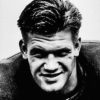
Fellow “Keystone” soldier Al Blozis, formerly an all-pro offensive tackle with the New York Giants, joined the Army after 1943 season. Blozis was so large that (6’6”) that the Army had to waive it’s size restrictions, and permits him to play three games during the 1944 season while he is on furlough. The former Georgetown track legend sets the Army grenade throwing record by launching one over 94 yards downrange before shipping overseas as a platoon leader.
When two of his men fail to return from a scouting mission in France’s Vosges Mountains, Blozis sets out alone to recover them – and is never seen again. The Giants retire his number 32 and he is named to the 1940s All-Decade Team.
Fellow Giant Jack Lummus joins the Marine Corps after playing nine games at end during the 1941 season. While serving stateside, he serves as a military policeman and enters officer candidate school, and undergoes training as a member of the elite Marine Raiders.
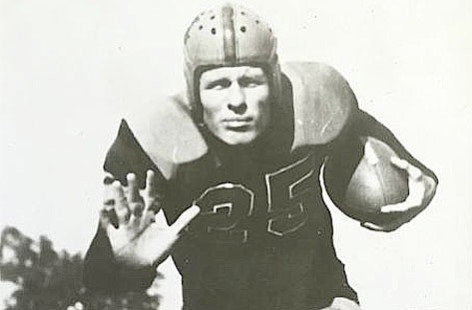
Lummus lands on Iwo Jima with the 27th Marines, and on March 8, 1944, the platoon commander conducts an incredibly daring one-man assault against three enemy fortifications. Wounded several times by grenades and, despite withering fire from the fortifications, Lummus wipes out the defense network. He continues his charge, attacking further positions before a landmine blows off both of his legs. Before he dies, Lummus tells a corpsman “Well, Doc, it looks like the Giants have lost a good end.”
For his actions, 1st Lt. Lummus is posthumously awarded the Medal of Honor – the nation’s highest award for combat valor.
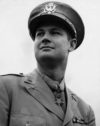
Capt. Maurice L. “Footsie” Britt played nine games as an end for the Detroit Lions before reporting for duty as a platoon leader in the 3rd Infantry Division. Britt saw extensive service in both the North African and European Theaters, participating in landings at Morocco, Sicily, and Salerno, and Anzio.
While fighting in Italy in 1943, Britt led a handful of men, repelling a German attack on his company. Despite being outnumbered and seriously wounded, Britt wiped out an enemy machine gun crew, killing, wounding, and capturing several German soldiers – in addition to freeing captured US troops and saving his company from potentially being wiped out. For these actions, Britt was awarded the Medal of Honor. Together with his four Purple Hearts, he owns the distinction of becoming the first soldier in World War II to earn America’s top four valor awards – the Medal of Honor, Distinguished Service Cross, Silver Star, and Bronze Star – which he received twice.
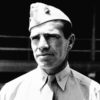
Former Chicago Cardinal head coach John E. “Jack” Chevigny, whom Knute Rockne called “the best right halfback in Notre Dame history,” joined the Army and is soon transferred into the Marine Corps Reserve as a 1st Lt., where he coaches the Camp Lejeune Leathernecks football team to 6-0 after taking over midseason. Chevigny requests an overseas assignment – and is killed while landing with the 27th Marines on Iwo Jima.
After a standout career at the University of North Carolina, Edwin B. “King Kong” Kahn joined the Boston (later Washington) Redskins, and was selected for the all-NFL team in 1935. When war breaks out, Kahn joins the Army – ultimately becoming a 1st Lt.. He is hit during the Battle of Kwajalein, and mortally wounded in the Battle of Leyte Gulf. Also killed during the invasion is Ruey “Young” Bussey who traded his Chicago Bears uniform for Navy dungarees after the 1941 season.
Bussey – one of 45 Chicago Bears to serve in the military during World War II – was backup for starting quarterback and future Hall of Famer Sid Luckman, who served in the Merchant Marine. The Bears’ legendary coach George Halas – who briefly played centerfield for the New York Yankees before co-founding the NFL in 1920 – served as a Naval officer in both world wars.
Future New York Giants punter, and later iconic coach of the Dallas Cowboys, Tom Landry flew 30 missions in the European Theater as a B-17 co-pilot with the 493d Bombardment Group.
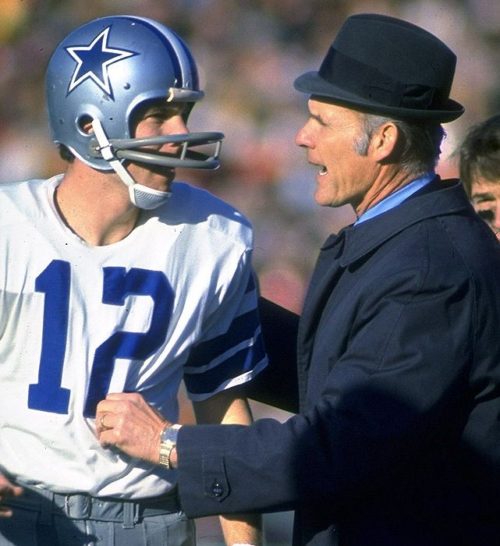
Following his two seasons with the Green Bay Packers, Howard W. “Smiley” Johnson received a commission with the Marine Corps, fighting with the 23rd Marines on Kwajalein, Saipan, and Tinian. Johnson, twice awarded the Silver Star for valor, is hit by a Japanese shell while fighting on Iwo Jima and the mortally wounded officer refuses medical assistance until his men are treated first.
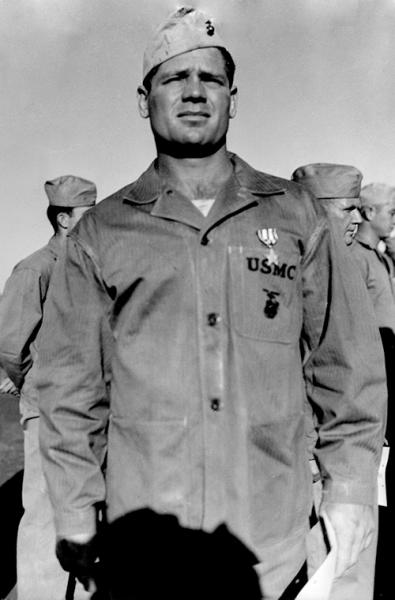
Maj. Keith Birlem played back for the Washington Redskins and Chicago Cardinals before becoming commander of the 508th Bombardment Squadron. During a training mission over England on May 7, 1943, Birlem’s B-17 “Flying Fortress” collides with another bomber, killing all 20 crewmen.
Before his Hall of Fame career as the Philadelphia Eagles’ tough-as-nails “60-minute” athlete that played both center and linebacker over a career that includes eight Pro Bowl seasons and two championships, Chuck “Concrete Charlie” Bednarik was a waist gunner for the Army Air Forces and flew 30 missions over Germany in a B-24.
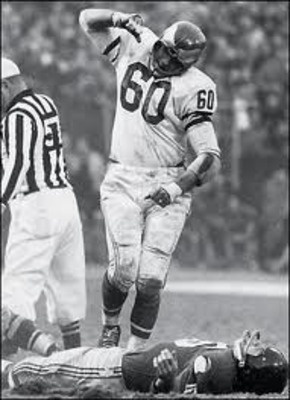
Former Eagles halfback and kicker Michael M. “Nick” Basca served as a tank commander in Gen. George S. Patton’s Third Army. Landing on Utah Beach and fighting his way across France, his tank was hit by a German 88mm shell near Obreck, France, immediately killing Basca.
University of Southern California Trojans end and punter Dan Heywood is drafted by the Marine Corps in the middle of the 1943 season. Despite playing only five games, Heywood is named to the All-American team before shipping out to the South Pacific aboard the battleship USS Iowa. He is drafted again – this time by the Detroit Lions – despite his overseas service, but will not be able to play for his team until 1947. Heywood will return to service during the Korean War, and also during Vietnam, as commander of the 26th Marines, before retiring as a colonel in 1974.
Heywood and Harry Marker, who played one game for the Pittsburgh Pirates (modern-day Steelers) in 1934, own the incredible distinction of serving during World War II, Korea, and Vietnam.
Charles E. “Charlie” Behan played one season at end for the Lions before joining the Marines. On Okinawa, Behan was hit in the mouth by shrapnel, and despite losing the ability to talk, he refuses medical evacuation, shoving cotton in the wound to keep him in the fight. As the 29th Marines charge up Sugar Loaf Hill, 1st Lt. Behan leads the way, taking an exposed position to guide his troops. Behan is killed by enemy fire, and posthumously awarded the Navy Cross.
While today’s news from the National Football League is dominated by social and political issues instead of athletic accomplishments on the field, let’s remember that football is a game that should bring us together and not divide us. During our nation’s wars, patriotic Americans in the NFL sacrificed their careers on the gridiron and laced up combat boots for the battlefields of Europe, the Pacific, Korea, Vietnam, Iraq, and Afghanistan. Today’s amazing athletes stand on the shoulders of these great men, who put their country before their careers. Let’s hope they can honor these fallen heroes and the great country they fought for by keeping their personal politics off the field and return the NFL to the proud legacy they represent.
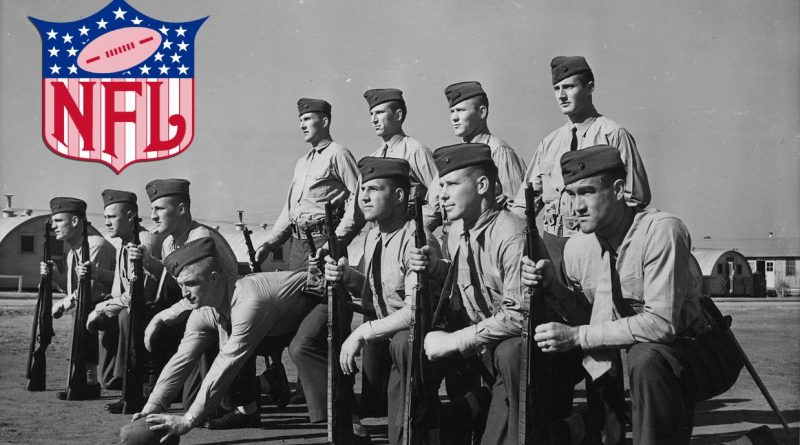
This piece is just for World War II veterans. Woody Campbell is featured here: https://www.untothebreach.net/2010/12/26/vietnam-veterans-of-the-nfl/
Unfortunately there is not much information on Campbell, so if you have anything more than what I have, please share!
Thanks,
Chris
What about Woody Campbell
https://en.wikipedia.org/wiki/Woody_Campbell_(American_football)
Great stories of real American heroes, unlike the pampered, spoiled, conceited, egotistical dim-wits (I know, I know… I should stop tiptoeing around and just state my mind) that won’t stand for the anthem and the owners and coaches who won’t force them to do so.